So you’re planning a trip to Europe, but don’t want to waste money with hidden fees or getting ripped off at the money exchange booth. We lived in France and traveling throughout Europe for 4 years, so I can safely say we’ve learned a few things over the years – and made some costly mistakes. We put all our tips into one place to, hopefully, help you avoid our blunders.
Guide to Managing Money in Europe
Knowing the local currency is a must. Luckily, half the countries in Europe use the Euro – many of which are typical American tourist destinations. I’ve heard stories from my parents traveling Europe years ago and needing a different currency in every different country. What a pain!
Now, while most countries you will likely visit use the Euro, not all do. Here is a list of the countries that do not use the Euro and the currency they use instead:
- Albania (Albanian lek)*
- Azerbaijan (Azerbaijani manat)
- Belarus (Belarusian ruble)
- Bulgaria (Bulgarian lev)
- Croatia (Croatian kuna)
- Czech Republic (Czech koruna)
- Denmark (Danish krone)**
- Georgia (Georgian lari)
- Hungary (Hungarian forint)
- Iceland (Icelandic krona)
- Liechtenstein (Swiss franc)
- Macedonia (Second Macedonian denar)
- Moldova (Moldovan leu)
- Norway (Norwegian krone)**
- Poland (Polish złoty)
- Romania (Fourth Romanian leu)
- Russia (Russian ruble)
- Serbia (Serbian dinar)
- Sweden (Swedish krona)
- Switzerland (Swiss franc)
- Turkey (Turkish lira)***
- Ukraine (Ukrainian hryvnia)
- United Kingdom (Pound sterling)
*Some touristic places in Albania also accept Euros, Pounds and American Dollars.
** Some tourist places in Denmark and Norway also accept Euros.
*** We used euros in Ephesus, Turkey but I don’t think the exchange rate was the greatest.
Hungary, Poland, Sweden and Czech Republic may accept Euros but the exchange rate is said be bad.
Generally, you should use the local currency even if they do accept Euro’s. You’ll get a better deal on your purchases.
Derrick still likes to talk about the time I tried to use Euro’s in Switzerland and couldn’t figure out why the parking meter wouldn’t work 🙂
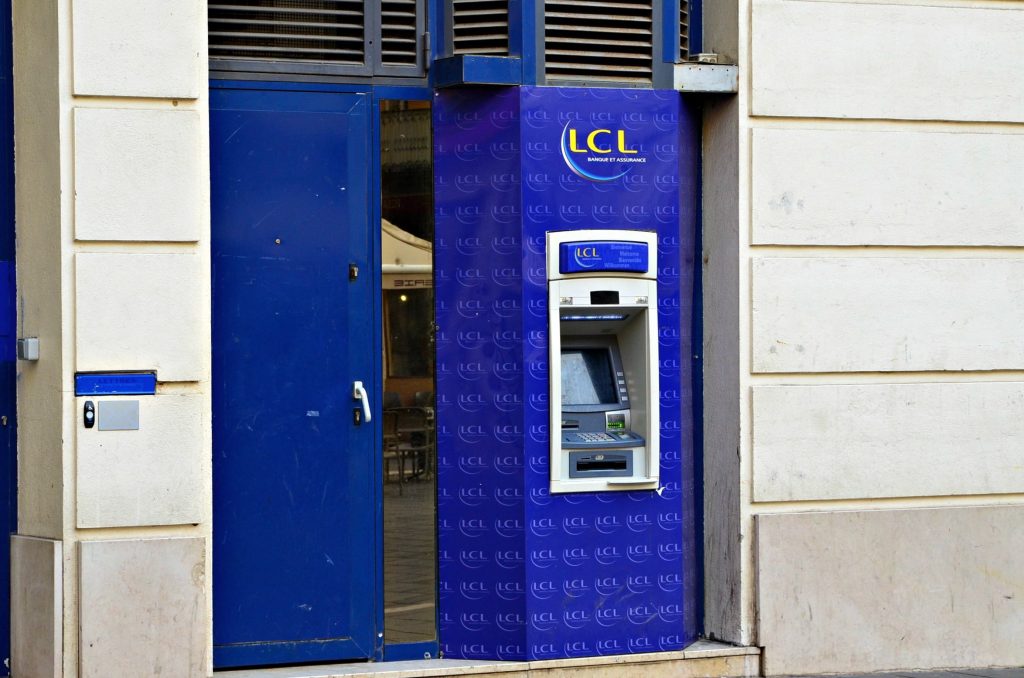
Take advantage of the ATM – cash machines to get local currency. I always get my cash from the ATM. I’m not a fan of currency exchange offices as the fees can be costly. Many European ATM’s don’t charge a fee to get cash. Typically the fee comes from your local bank. However, you’ll want to avoid ATM’s in corner shops and small supermarkets. These locations might charge a fee, so be careful here. I prefer to find ATM’s attached to banks for security as well. I’ve had my bank card number stolen abroad and it was a pain to get it cleared up.
If there is an ATM fee, the fee will be displayed prior to the withdrawal. You can choose your language at the ATM. Make sure to select English so you know if there are fees – look for the British flag 😉
Before heading out in the city, you can stop by the ATM at the airport upon arrival, to grab a bit of cash. This will hold you over and allow you to pay for a cab or get a bus ticket to your destination. Not all ATM’s are created equal, so if one charges a fee, you can try another bank.
Note – Barcelona likes to charge a 5€ per transaction. If going to Barcelona, I try to get cash beforehand. Otherwise I get it all in one transaction, so I’m not stuck paying another fee later.
The German bank, DB Deutsche, doesn’t have an ATM fee. So if you happen upon a place that charges a fee, look for a DB Deutsche Bank. They are pretty much everywhere.
Not all American debit cards are created equal. The US if famous for ATM fees and currency conversion fees. My bank charges $1 per transaction for not using an in-network ATM plus a 1% conversion fee. I paid this for months before I got smart. All that wasted money!
I now have a Capital One 360 account. They don’t charge any fees! There isn’t a fee for ATM withdrawals, or foreign transaction fee, monthly maintenance fee – nada. I simply transfer money online to this account from my primary bank for getting out cash abroad. Schwab is also a great bank as they have unlimited ATM fees rebates.
You can also ask your local bank if they have a relationship with foreign banks. You may be able to avoid an out of network fee this way. Ensure you write down the names of these banks before your trip – even look up locations before leaving home.
Plan on withdrawing money from your checking account. You don’t get the savings or checking option here in Europe and you can’t make a transfer at the ATM. You should be able to go online and move money from one account to another, in a pinch- provided you have secure wireless connectivity.
Finally, if you haven’t booked accommodations ahead of time, you might be able to get a discount by paying cash. The establishment won’t have to pay the credit card processing fee, so you could save a bit of money.
Spend extra cash before leaving the country, exchange it at the airport or exchange once home. You’ll get a bit of a better value exchanging at home, but you might just want it over and done with before takeoff. I try to watch my cash closely while traveling. If we are getting near the end of the trip, I’ll start paying for more in cash to get rid of it. This is especially true with coins as you can’t exchange coins back to USD. Your best bet is to spend it not exchange it back. Grab some postcards, souvenirs, snacks or whatever. If all else fails, you can keep it for your next trip. If your a frequent traveler, this is the way to go. Also, keep in mind that if you have a card without fees and are using ATM’s without fees, you can withdraw smaller amounts of money.
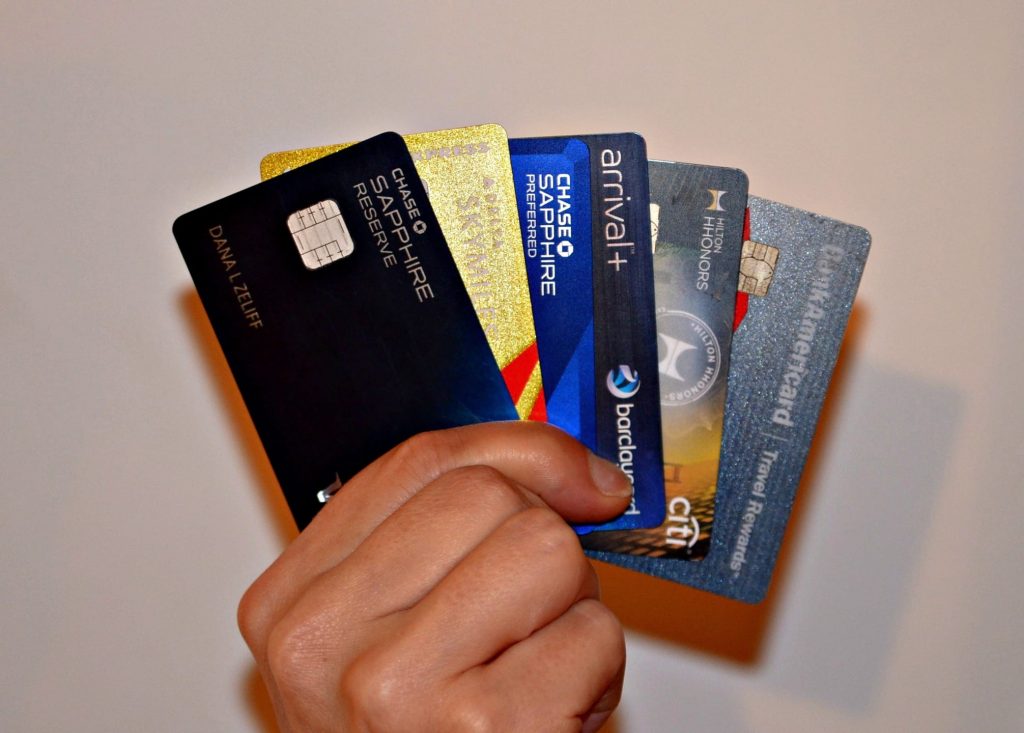
Credit Card’s are your friend, but don’t rely solely on this method of payment. I use my credit card for most purchases because I want the points, but we always pay it off at the end of the month. My credit cards have a 0% foreign transaction fee and have a chip. I use either my Visa or MasterCard. The exchange rate from Euro to USD are pretty similar with both brands. Although I’ve noticed that with other currencies, MasterCard can have a slightly better conversion rate. AMEX isn’t accepted at most places such as grocery stores, shops and restaurants. You should be okay at hotels and airlines. And I can’t remember seeing anywhere accepting the Discover card.
An excellent and very useful feature with credit cards are the alert functions. Many cards allow you to set up email alerts for threshold purchases. You can set these very low, say $10.00. You make an overseas purchase in a foreign currency and voila, you get an email alert which allows you to see what you really paid and you can deduce what kind of exchange rate your bank is giving you! Later, go online and see all the details!
I find it’s also helpful to have a card that can act as a chip and pin at unmanned machines. With my Barclay Arrival Plus card I can purchase tram or train tickets from the kiosk. Everywhere else I still have to sign, but at those unmanned machine, I use my pin. It’s also helpful when we rent cars and need to get gas. Many of the gas stations didn’t have an attendant, so I had to have a pin or no gas.
We carry multiple credit cards while traveling. What’s in my wallet? Derrick & I carry different cards, so if someones wallet is stolen, we aren’t stuck. We also split our cash for the same reason. I like to have a Visa and a MasterCard plus I have my debit card. Same for passports. At least one of us can go home!!!
Bank of America credit cards acts as a chip and pin card at unmanned machines such as gas stations and toll booths.
Chase Sapphire Preferred (Visa) offers a nice 60,000 point bonus and earns 2X points on dining and travel. There is a 0% foreign exchange fee. Point redemption is through the Ultimate Rewards program (best deal) or can be redeemed for cash.
Chase Sapphire Reserve (Visa) is my new favorite travel card. It offers a 60,000 point bonus plus the potential for another 50,000 point bonus. There is no foreign exchange fee. You’ll earn 3X points on dining and travel! Point redemption is through the Ultimate Rewards program (best deal) or can be redeemed for cash. The hefty annual fee will get you a $300 annual travel credit, airport lounge access, awesome travel benefits & discounts and more.
I have other travel cards, but these are my three favorites for occasional travelers. No matter which card you choose to use, always ensure it has a 0% foreign exchange fee. There are so many cards out there that offer this option, as long as you have decent credit, it shouldn’t be hard to get a card. Many standard credit cards charge up to a 3% foreign transaction fee. That adds up quickly!
To reiterate, ensure you have cash on hand. Not all shops or restaurants accept credit cards, especially out of the tourist areas. You’ll also need cash for tipping at restaurants & for tour guides, market shopping, bus & cab fare. You’ll occasionally see signs posted where credit cards can’t be used on purchase under 10€ – 15€.
Always select to pay in Euros (or the local currency) at the store & at the ATM – never convert to USD or your banks currency. This “courtesy” is known as a Dynamic Currency Conversion and will end up costing you money. Dynamic Currency Conversion is when the cost of a transaction is converted to your home currency at the point of sale. Sure, it’s nice to know what the rate is in USD, but you will pay 5% – 10% more to have the money converted at the point of sale. Don’t do it! Don’t let the foreign currency intimidate you and steal your money. Plus, it your credit card allows alerts, you’ll get this info anyway!
I repeat, AWALYS pay in the local currency. Even if you have a card with a foreign exchange fee, you will pay less than having it converted at the store.
Want to know the currency exchange rate? Use an app such as XE Currency. You can access currency rates offline. The Euro to the USD is so close right now, that you can pretty much estimate the difference in your head, though. You might also like to see more of our favorite Travel Apps for Europe before your trip.
Set up a travel notice on your accounts. Let your bank and credit card companies know you are traveling. A phone call or update online can save you headaches later. If you haven’t set up a travel notice, the foreign purchases can trigger a freeze on your card. Having to call to unlock your account is time consuming and it can be difficult to find a phone to make that international call.
While you’re at it – ask your bank your daily withdrawal limit. If you have a $300 limit, that’s only about 280€ at the current exchange rate. You’re card could be rejected just because you requested an amount over your limit.
Help prevent RFID skimming by having a RFID blocking wallet. What is RFID? Radio-frequency identification (RFID) is the wireless use of electromagnetic fields to transfer data. High-tech thieves can get your credit card information by having an RFID reader which can activate the chip in your card from a distance and pick up the information they’re designed to transmit. If the thieves are smart, you won’t even be aware it’s happening.
Instead of getting a new wallet, Derrick made me a pouch made from aluminum foil. While the occurrence of RFID Skimming is rare, I do have a friend who had this happen to her while at a theme park. While traveling, I ere on the side of caution.
One of the frequently most asked questions from travelers is “should I exchange money before I travel to Europe”. The answer is no! As I mentioned earlier, I’m not a fan of currency exchanges. You get hit with a fee to exchange your money and pay a higher exchange rate. How do I know? I’ve done it! Even if you get hit with an ATM fee, you will still save more money by getting your cash from the ATM than at a currency exchange.
However, you could order money from a local bank before traveling. Call around to get the best rate and remember that is can take time to get the money shipped – plus a possible shipping fee. If you are renting an apartment and have a high cash deposit, you may want to go this route depending on the amount of money you can withdraw in 24 hours. I usually avoid rentals with high cash deposits, but this is an option. Again, I recommend waiting to get your money at the local ATM to get the best exchange rate. You’ll find plenty of ATM machines in European airports even if the first one your find is broken.
Bring some USD with you on your trip. I haven’t experienced this, but I’m told some countries that need Visa’s require the Visa to be purchased in USD. While this is mostly in Asia & Africa, I want to mention it. Also, if something crazy happens during your visit and the banks close, having dollars is better than nothing at all.
Know the lingo, an ATM is Known as:
– France = (DAB) distributeur automatique de billets or just distributor
– UK = cash machines
– Germany = Geldautomat
– Italy and many other countries = bancomat
Whether or not this is your first trip to Europe, it’s important to be smart and think ahead about how you’ll be spending money there. Enjoy your visit and know you’re not wasting your hard earned money on fees or paying higher than the current exchange rate. If you’re going to spend money, you might as well spend it on delicious food or trinkets to bring home!
What are out tips for managing money in Europe? Do you have any money blunders of your own?
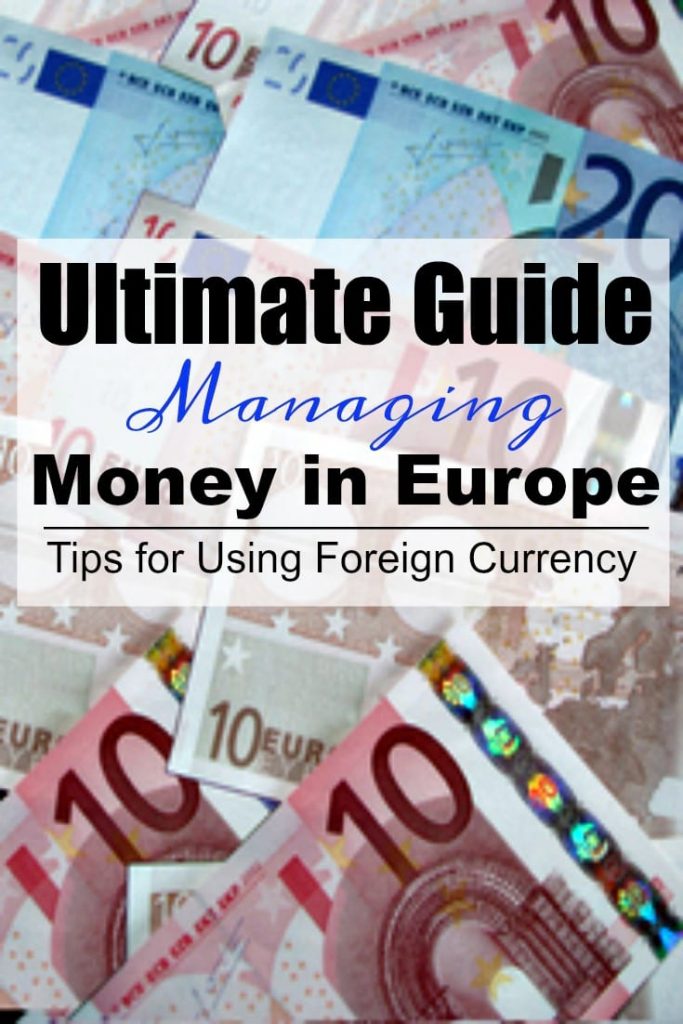
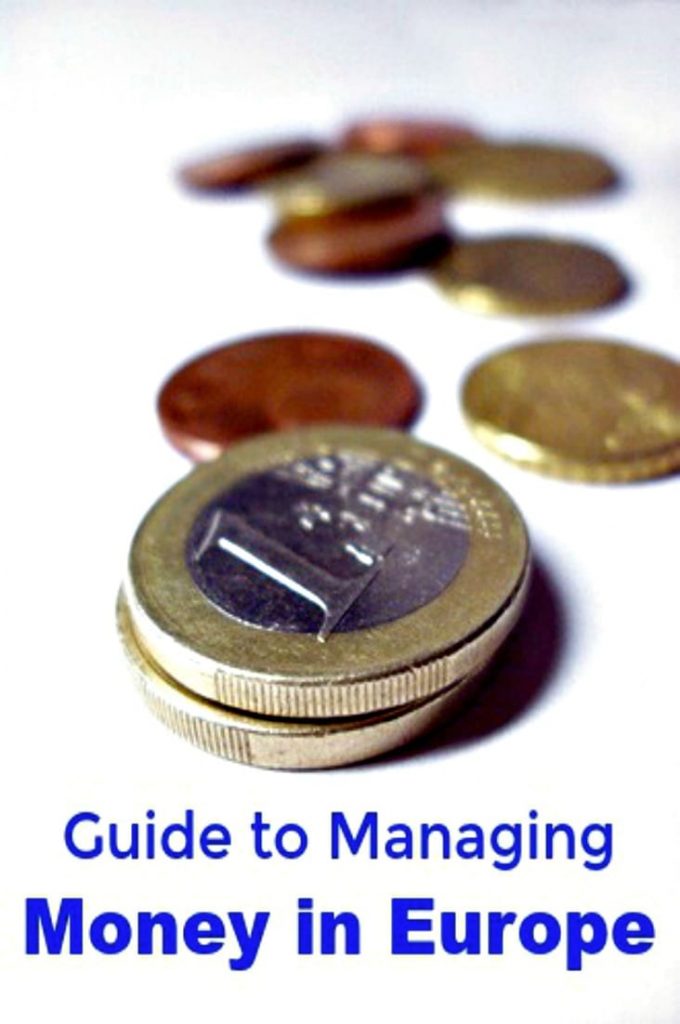
Pinterest Photo Credit: FreeImages.com/Timothy Smith
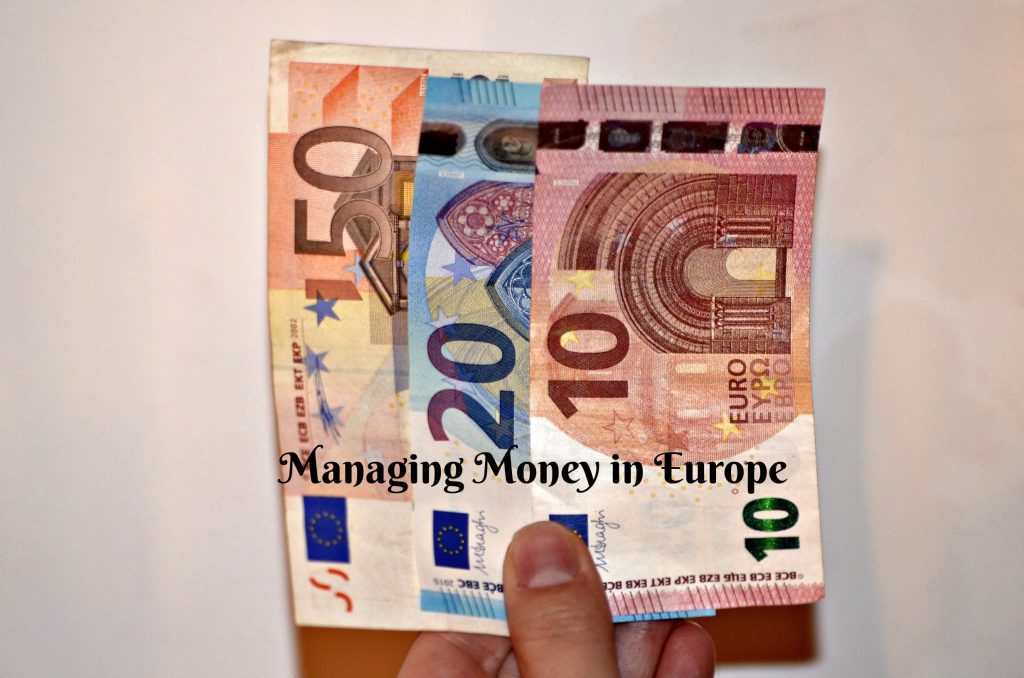

This is a great article, so helpful! What one can also do is save up on ATM and bank fees with apps like ATM Fee Saver – it gives a list of atms in many countries that do not charge any fees to foreign card holders or have much lower fees than others along with withdrawal limits. quite a life saviour. worth adding to your list of tricks! And also a get fee free card while travelling.
I’m traveling to London, from Seattle, in March 2020. According to my bank (Wells Fargo) I can get British pounds free of charge if they have the currency available at a branch. This might be an option at your American bank branch as well so I’d ask them.
Hi Dana, Thank you for the article!
I generally avoid ATM because of the fees and the unfavourable rate at the exchange offices. To change cash, there is a new mobile application Fairswap.
Broadly, we can exchange & convert cash currency in real-time by meeting with each other at a pre-agreed location.
Could be a good way to find some foreign currency before travelling or get rid of some leftover after holidays.
Thanks, I hadn’t heard of this app. Though I couldn’t find a lot of reviews on it. With a card that doesn’t charge a fee for out of network ATM withdraws, I find it to be a great option.
Hi Dana – Great article, thank you. Do you have a list or map of DB DAB locations in Paris? I am having trouble finding anything of the sort.
Hm, all I could find was this link: https://www.db.com/france/
But you shouldn’t need to worry about ATM fees in Paris. Other than what your bank may charge. Unless you’re using the little in-store machines.